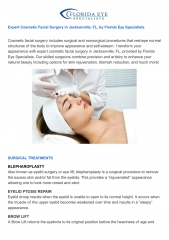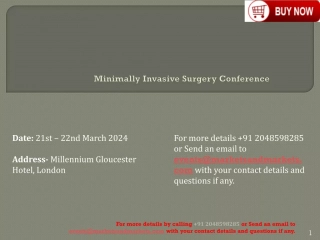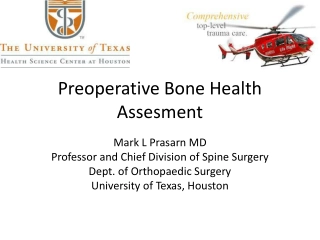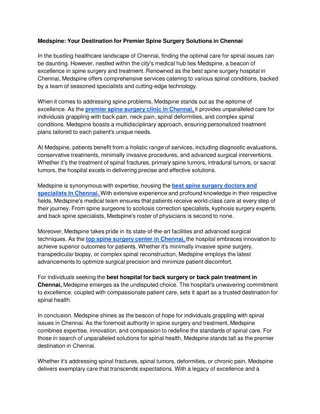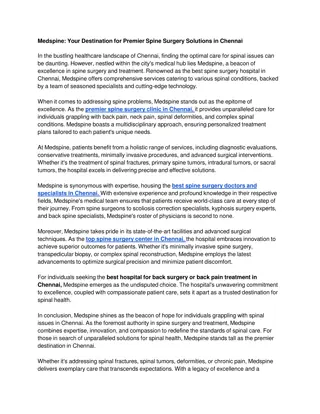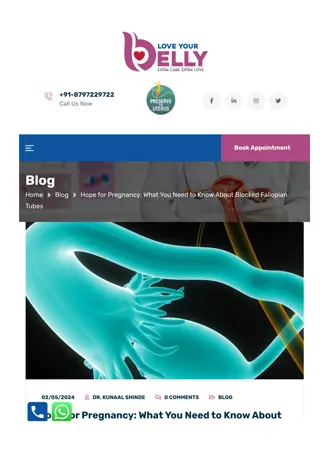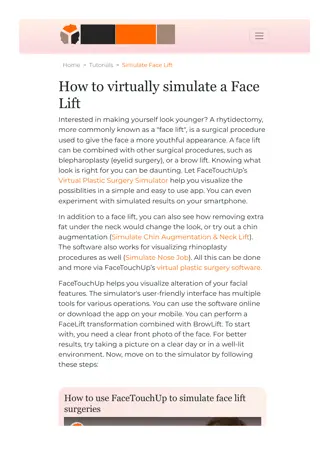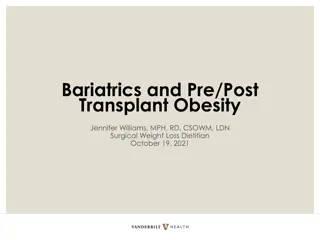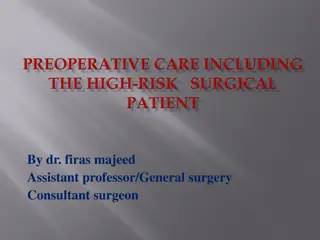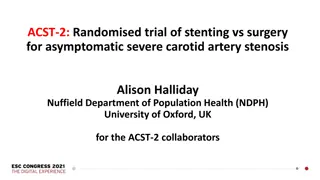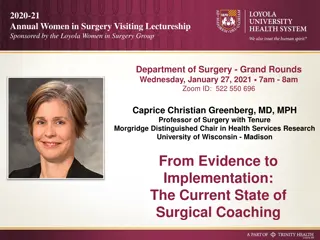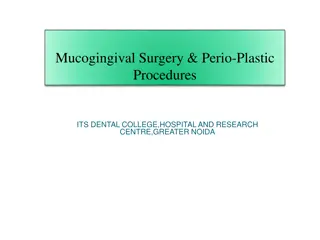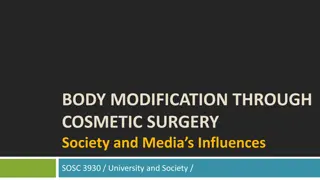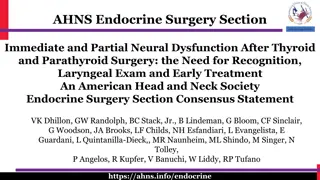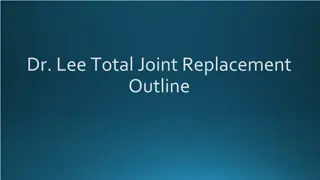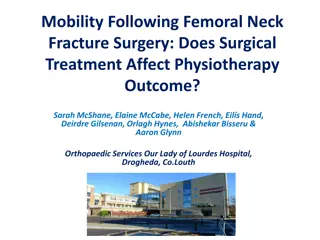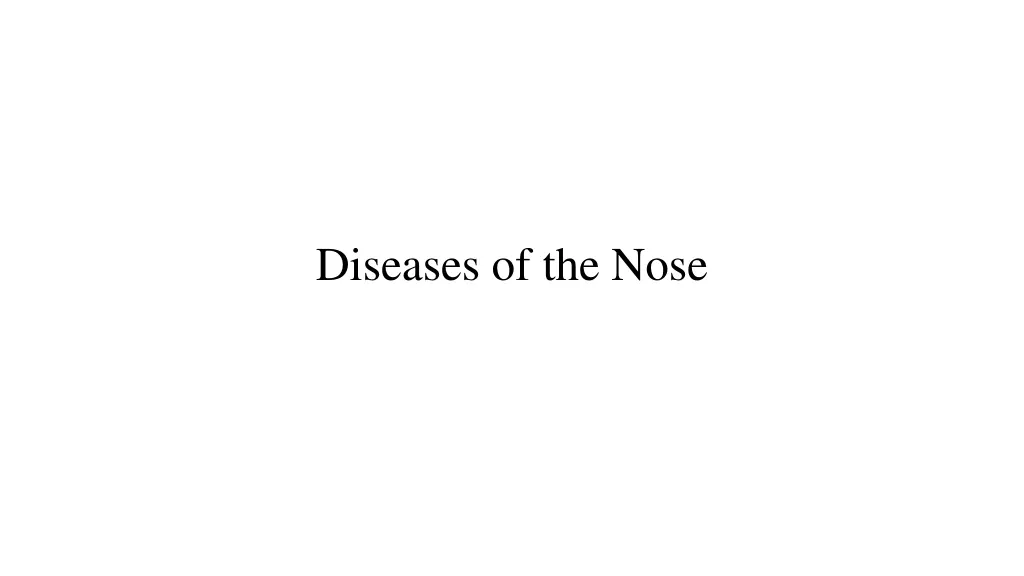
Diseases and Deformities of the Nose
Learn about various diseases and deformities of the nose, including cellulitis, saddle nose, hump nose, crooked nose, and nasal tumors. Explore causes, symptoms, and treatment options for these conditions affecting the nasal region.
Download Presentation

Please find below an Image/Link to download the presentation.
The content on the website is provided AS IS for your information and personal use only. It may not be sold, licensed, or shared on other websites without obtaining consent from the author. If you encounter any issues during the download, it is possible that the publisher has removed the file from their server.
You are allowed to download the files provided on this website for personal or commercial use, subject to the condition that they are used lawfully. All files are the property of their respective owners.
The content on the website is provided AS IS for your information and personal use only. It may not be sold, licensed, or shared on other websites without obtaining consent from the author.
E N D
Presentation Transcript
Cellulitis Nasal skin may be invaded by streptococci or staphylococci leading to a red, swollen and tender nose. Sometimes it is an extension of infection from the nasal vestibule Nasal Deformities- Saddle Nose- Depressed nasal dorsum may involve bony cartilaginous or both bony & cartilaginous components of nasal dorsum Nasal trauma causing depressed fractures is most common aetiology It can also result from excessive removal of septum in submucous resection, destruction of septal cartilage by haematoma or abscess, sometimes by leprosy, tuberculosis or syphilis. The deformity can be corrected by augmentation rhinoplasty by filling the dorsum with cartilage, bone or a synthetic implant. If depression is only cartilaginous, cartilage is taken from the nasal septum or auricle and laid in a single or multiple layers. If deformity involves both cartilage & bone, cancellous bone from the iliac crest is the best
Hump Nose This may also involve the bone or cartilage or both bone & cartilage It can be corrected by reduction rhinoplasty which consists of exposure of nasal framework by careful raising of the nasal skin by a vestibular incision, removal of hump and narrowing of lateral wall by osteotomies to reduce the widening cleft by hump removal Crooked or Deviated Nose The midline of dorsum of frontonasal angle to the tip is curved in a C or S shaped manner In deviated nose, the midline is straight but deviated to one side Usually these deformities are traumatic in origin Injuries sustained during birth, neonatal period or childhood but not immediately recognised, will also develop into these deformities with the growth of nose The deviated/crooked nose can be corrected by rhinoplasty or septorhinoplasty
HUMP NOSE CROOKED NOSE
Tumours It may be congenital, benign or malignant I) Congenital Tumours Dermoid Cyst a) Simple dermoid- it occurs as a midline swelling under the skin but in front of nasal bones . It does not have any external opening b) Associated with sinus- seen in infants and children and is represented by a pit of a sinus in the midline of the dorsum of nose. Hair may be seen protruding through the sinus opening. In these cases the sinus track may lead to a dermoid cyst under the nasal bone in front of upper part of nasal septum or may have an intracranial dural connection
Encephalocele or meningoencephalocele It is a herniation of brain tissue with meninges through a congenital bony defect. An extranasal meningoencephalocele presents as a subcutaneous pulsatile swelling in the midline at the root of nose (nasofrontal variety), side of nose (nasoethmoid variety) or on the antero-medial aspect of the orbit (naso-orbital variety) Swellings show cough impulse and may be reducible. Glioma It is a nipped portion of encephalocele during embryonic development Most of them (60%) are extranasal and present as firm subcutaneous swellings on the bridge side of nose or near the inner canthus Some of them are purely intranasal (30%) while 10% are both intra and extra nasal. Extranasal gliomas are encapsulated and can be easily removed by external nasal approach
II) Benign Tumours They arise from the nasal skin and include papilloma (skin wart), haemangioma, pigmented naevus, seborrhoeic keratosis, neurofibroma or tumour of sweat gland Rhinophyma or potato tumour is a slow growing benign tumour due to hypertrophy of the sebaceous glands of the tip of nose often seen in cases of long- standing acne rosacea. It presents as pink lobulated mass over the nose with superficial vascular dilatation; mostly affects men past middle age Treatment consists of paring down the bulk of tumour with sharp knife or carbondioxide laser and the area is allowed to re-epithelialize. Sometimes tumour is excised completely and the raw area skin-grafted
III) Malignant Tumours a) Basal Cell Carcinoma(Rodent Ulcer) It is the most common malignant tumour involving skin of nose (87%) equally affecting males and females in the age group of 40-60 Common sites on nose are the tip and the ala It may present as a cyst or papulo-pearly nodule or an ulcer with rolled edges It is very slow growing and remains confined to skin for a long time Underlying cartilage or bone may get invaded Nodal metastases are extremely rare
b) Squamous cell carcinoma It is the second most common malignant tumour (11%) equally affecting both sexes in 40-60 age group. It occurs as a infiltrating nodule or an ulcer with rolled out edges affecting side of nose or columella Nodal metastases are seen in 20% of cases Early lesions respond to radiotherapy; more advanced lesions or those with exposure of bone or cartilage require wide surgical excision and plastic repair of the defect
c) Melanoma It the least common variety It is superficially spreading (slow growing) or nodular invasion Treatment is by surgical excision
Diseases of the Nasal Vestibule Furuncle or Boil It is an acute infection of the hair follicle by staphylococcus aureus Trauma from picking of the nose or plucking the nasal vibrissae, is the usual predisposing factor The lesion is small but exquisitely painful & tender Inflammation may spread to the skin of nasal tip and dorsum which become red and swollen. The furuncle may rupture spontaneously in the nasal vestibule Treatment consists of warm compresses, analgesics to relieve pain and topical and systemic antibiotics directed against staphylococcus
Vestibulitis It is diffuse dermatitis of nasal vestibule Nasal discharge due to any cause such as rhinitis, sinusitis or nasal allergy, coupled with trauma The causative organism is staphylococcus aureus Vestibulitis may be acute or chronic In acute form vestibular skin is red, swollen and tender; crusts and scales cover an area of skin erosion or excoriation. The upper lip may be involved In chronic from, there is induration of vestibular skin with painful fissures and crusting Treatment consists of cleaning the nasal vestibule of all crusts and scales with cotton applicator soaked in hydrogen peroxide and application of antibiotic steroid ointment
Stenosis & Atresia of the Nares Accidental or surgical trauma to the nasal tip or vestibule can lead to web formation and stenosis of anterior nares. In Young s operation vestibular skin flaps are raised to create deliberate closure of nares in the treatment of atrophic rhinitis Destructive inflammation lesions of the nose also cause stenosis Congenital atresia of anterior nares due to non-canalisation of epithelial plug is a rare condition Stenosis of nares can be corrected by reconstructive plastic procedures
Tumours a) Naso-alveolar cyst - It presents as smooth bulge in the lateral wall & floor of nasal vestibule - The cyst can be excised by sublabial approach preserving the integrity of vestibular skin b) Papilloma or wart - It may be single or multiple , pedunculated or sessile c) Squamous cell carcinoma - It arises from the lateral wall of the vestibule & may extend into nasal floor, columella and upper lip - It can metastasise to the parotid & submandibular nodes
DEVIATED NASAL SEPTUM Aetiology a) Trauma-A lateral blow on the nose may cause displacements of septal cartilage from the vomerine groove and maxillary crest, while a crushing blow from the front may cause buckling, twisting, fractures and duplication of nasal septum with telescope of its fragments. Injuries to the nose commonly occur in childhood but are often overlooked. Trauma may also be inflicted at birth during difficult labour when nose is pressed during its passage through the birth canal.
b) Developmental error Nasal septum is formed by tectoseptal process which descends to meet the two halves of the developing palate in the midline. . During the primary & secondary dentition. Further development takes place in the palate, which descends & widens to accommodate the teeth Unequal growth between the palate and the base of skull may cause buckling of the nasal septum. In mouth breathers as in adenoid hypertrophy, the palate is often highly arched and the septum is deviated c) Racial factors Caucasians are affected more than negroes d) Hereditary factors Several members of the same family have deviated nasal septum
Types of DNS 1) Anterior dislocation - Septal cartilage may be dislocated into one of the nasal chambers. - It is better appreciated by looking at the base of nose when patient s head is tilted backwards 2) C-shaped deformity - Septum is deviated in a simple curve to one side - Nasal chamber on the concave side of the nasal septum will be wider and may show compensatory hypertrophy of turbinates 3) S-shaped deformity - Septum may show s- shaped curve either in vertical or anteroposterior plane - Such deformity may cause bilateral nasal obstruction
4) Spurs - A spur is shelf like projection often found at the junction of bone & cartilage - A spur may press on the lateral wall and gives rise to headache - It may also predispose to repeated epistaxis from the vessels stretched on its convex surface 5) Thickening - It may be due to organised haematoma or over-riding of dislocated septal fragments
Clinical Features: Males are more affected than females Nasal obstruction- depending on type of septal deformity obstruction may be unilateral or bilateral. Respiratory currents pass through upper part of nasal cavity, therefore, high septal deviation cause nasal obstruction One should ascertain the site of obstruction - Vestibular (caudal septal dislocation, synechia or stenosis) - At the nasal valve (synechia, usually post-rhinoplasty) - Attic (along upper part of nasal septum due to high septal deviation) - Turbinal (hypertrophic turbinates or concha bullosa) & - Choanal (choanal atresia or a choanal polyp)
*Cottle Test - Used in nasal obstruction - In this test cheek is drawn laterally while the patient breathes quietly - If the nasal airway improves on the test side, the test is positive & indicates abnormality of the vestibular component of nasal valve Headache- DNS especially of spur variety may press on the lateral wall of nose giving rise to pressure headache Sinusitis- DNS may obstruct sinus ostia resulting in poor ventilation of the sinuses. Therefore it forms an important cause to predispose or perpetuate sinus infection Epistaxis- mucosa over the deviated part of septum is exposed to the drying effects of air currents leading to formation of crusts which when removed cause bleeding. Bleeding may also occur from vessels over a septal spur
Anosmia- failure of inspired air to reach the olfactory region may result in total or partial loss of sense of smell External deformity- septal deformities may be associated with deviation of the cartilaginous or both the bony & cartilaginous dorsum of nose, deformities of the nasal tip or columella Middle ear infection- DNS also predisposes to middle ear infection Treatment Submucous resection operation (SMR) Septoplasty
Septal Haematoma It is collection of blood under the perichondrium or periosteum of the nasal septum It often results from nasal trauma or septal surgery In bleeding disorders it may occur spontaneously Clinical Features- Bilateral nasal obstruction is the commonest presenting symptom It may be associated with frontal headache & sense of pressure over the nasal bridge Examination reveals smooth rounded swelling of the septum in both the nasal fossae Palpation may reveal the mass to be soft and fluctuant
Complications: Septal haematoma if not drained may organise into fibrous tissue leading to a permanently thickened septum If secondary infection supervenes it results in septal abscess with necrosis of cartilage & depression of nasal septum
Septal Abscess It results from secondary infection of septal haematoma Occasionally it follows furuncle of the nose or upper lip It may also follow acute infection such as typhoid or measles Clinical Features: There is bilateral nasal obstruction with pain & tenderness over the bridge of nose There may be fever with chills and frontal headache Skin over the nose may be red & swollen Internal examination may reveal smooth bilateral swelling of the nasal septum Fluctuation can be elicited in this swelling Septal mucosa is often congested Submandibular lymph nodes may be enlarged & tender
Complications: Necrosis of septal cartilage often results in depression of cartilaginous dorsum in the supratip area and may require augmentation rhinoplasty 2-3 months later Necrosis of septal flaps may lead to septal perforation Meningitis and cavernous sinus thrombosis (rare) can be a serious complication Treatment Abscess should be drained as early as possible . Incision is made on most dependent part of abscess & a piece of septal mucosa is excised
Perforation of Nasal Septum Aetiology Traumatic perforation- - Trauma is the most common cause - Injury to mucosal flaps during SMR cauterization of septum with chemicals or galvanocautery for epistaxis and habitual nose picking are common causes of trauma. Occasionally septum is deliberately perforated to put ornaments Pathological perforations- - Septal abscess - Nasal myiasis - Rhinolith or neglected foreign body causing pressure necrosis - Chronic granulomatous conditions like lupus, tuberculosis and leprosy cause perforation in the cartilaginous part while syphilis involves the bony part - Wegener s granuloma is a midline destructive lesion which may cause total septal destruction
Idiopathic - When there is no evidence of trauma or previous disease & patient may be unaware of existence of perforation Clinical Features: Small anterior perforation cause whistling sound during inspiration or expiration Larger perforations develop crusts which obstruct the nose or case severe epistaxis when removed Treatment Inactive small perforation can be closed by plastic flaps Sometimes a thin silastic button can be worn to get relief from the symptoms
EPISTAXIS Bleeding from inner part of nose is termed as epistaxis It is seen in all age groups i.e children, adults & older people It is a sign. It often presents as a emergency
Blood Supply of Nose It is richly supplied by both the external and internal carotid systems, both on the septum & lateral walls Nasal Septum Internal Carotid system a) Anterior ethmoidal artery b) Posterior ethmoidal artery Both are branches of ophthalmic artery External Carotid System a) Sphenopalatine artery (branch of maxillary artery) gives nasopalatine and posterior nasal septal branches b) Septal branch of greater palatine artery (branch of maxillary artery) c) Septal branch of superior labial artery (branch of facial artery)
Lateral Wall Internal Carotid System a) Anterior ethmoidal b) Posterior ethmoidal Both are branches of ophthalmic artery External Carotid System a) Posterior lateral nasal branches- from sphenopalatine artery b) Greater palatine artery- from maxillary artery c) Nasal branch of anterior superior dental- from infraorbital branch of maxillary artery d) Branches of facial artery to nasal vestibule
Little area Situated in the anterior part of nasal septum just above the vestibule Four arteries- anterior, ethmoidal , septal branch of superior labial, septal branch of sphenopalatine and the greater palatine, anastamose here to form a vascular plexus called Kiesselbach splexus This area is exposed to drying of inspiratory current and to finger nail trauma & is usual site for epistaxis in children and young adults Retrocollumellar vein- this vein runs vertically downwards just behind the columella crosses the floor of nose and joins venous plexus on the lateral nasal wall
Causes of epistaxis a) Local- in the nose or nasopharynx b) General c) Idiopathic A) Local Causes Trauma- Finger nail trauma, injuries of nose, intranasal surgery, fracture of middle third of face and base of skull, hard-blowing of nose, violent sneeze Infections- Acute- viral rhinitis, nasal diphtheria, acute sinusitis Chronic- all crust forming diseases eg- atrophic rhinitis, rhinitis sicca, tuberculosis, syphilis septal perforation, granulomatous lesion of the nose eg- rhinosporidiosis Foreign bodies- Non living- any neglected foreign bodies, rhinolith Living- Maggots leeches
Neoplasms of nose and paranasal sinuses Benign- Haemangioma, papilloma Malignant- Carcinoma or sarcoma Atmospheric changes- high altitude, sudden decompression (caisson s disease) Deviated nasal septum Nasopharynx- a) Adenoiditis b) Juvenile angiofibroma c) Malignant tumours
B) General Causes a) Cardiovascular system- hypertension, arteriosclerosis, mitral stenosis, pregnancy (hypertension & hormonal) b) Disorders of blood & blood vessels- aplastic anaemia, leukaemia, thrombocytopenic & vascular purpura, haemophilia, Christmas disease, Scurvy, Vitamin K deficiency, hereditary haemorrhagic telangectasia c) Liver disease- Hepatic cirrhosis (deficiency of factor II, VII, IX & X) d) Kidney disease- chronic nephritis e) Drugs- excessive use of salicylates and other analgesics(headache & joint pains), anticoagulant therapy(for heart diseases) f) Mediastinal compression- tumours of mediastinum (raised venous pressure in nose g) Acute general infection- influenza, measles, chicken pox, whooping cough, rheumatic fever, infectious mononucleosis h) Vicarious menstruation (epistaxis occurring at time of menstruation)
C) Idiopathic- many times cause of epistaxis is not clear Sites of Epistaxis 1) Little s area- In 90% of cases bleeding occurs at this site 2) Above the level of middle turbinate. Bleeding from above the middle turbinate and corresponding area on the septum is often from the anterior & posterior ethmoidal vessels (internal carotid system) 3) Below the level of middle turbinate- here bleeding is from the branches of sphenopalatine artery. It may be hidden, lying lateral to middle or inferior turbinate and may require infrastructure of these turbinates for localisation of bleeding site and placement of packing to control it 4) Posterior part of nasal cavity- here blood flows directly into the pharynx 5) Diffuse- both from septum and lateral nasal wall. This is often seen in general systemic disorders and blood dyscrasia 6) Nasopharynx
Classification of Epistaxis Anterior Epistaxis- when blood flows out from the front of nose with the patient in sitting position Posterior Epistaxis- mainly the blood flows back into the throat. Patient may swallow it and later have a coffee ground vomitus.
Difference between Anterior & Posterior Epistaxis Posterior Epistaxis Less common Mostly from posterosuperior part of nasal cavity; often difficult to localise the bleeding point After 40yrs of age Spontaneous , often due to hypertension or arteriosclerosis Bleeding is severe requires hospitalization; postnasal pack often required Anterior Epistaxis More common Mostly from little s area or anterior part of lateral wall Mostly occurs in children or young adults Mostly trauma is the cause Usually mild can be easily controlled by local pressure or anterior pack
Management First Aid Most of time bleeding occurs from little s area. It can be controlled by pinching the nose with thumb and index finger for about 5 minutes this compresses vessels of the little s area . In trotters method patient is made to sit leaning a little forward over a basin to split any blood & breathe quietly from mouth(cold compression should be applied to nose to cause reflex vasoconstriction)
Anterior Nasal Packing In cases of active anterior epistaxis nose is cleared of blood clots by suction & attempt is made to localise the bleeding site . In minor bleeds cauterization of the bleeding area can be done from accessible sites If bleeding is profuse and /or site of bleeding is difficult to localise anterior packing should be done A ribbon gauze soaked with liquid paraffin is used About 1 mtr gauze (2.5cm width in adults, 12mm in children) required for each nasal cavity First few cm s of gauze are folded upon itself and inserted along the floor and then the whole nasal cavity is packed tightly by layering the gauze from floor to the roof and from before backwards. Packing can also be done in vertical layers from back to the front. One or both cavities may need to be packed. Pack can be removed after 24 hours if bleeding has stopped. Sometimes it had to be kept for 2 to 3 days; in that case systemic antibiotics should be given to prevent sinus infection & toxic shock syndrome
Posterior Nasal Packing It is first prepared by three silk ties to a piece of gauze rolled into the shape of cone. A rubber catheter is passed through the nose and its end brought out from the mouth Ends of the silk threads are tied to it and catheter withdrawn from nose. Pack which follows the silk thread, is now guided into the nasopharynx with the index finger. Anterior nasal cavity is now packed and silk threads tied over a dental roll. The third silk thread is cut short and allowed to hang in the oropharynx. It helps easy removal of the pack later. Patients requiring postnasal pack should always be hospitalised Instead of postnasal pack a foley s catheter can also be used. The bulb is inflated with saline and pulled forward so that the choana is blocked and then an anterior nasal pack is kept in the usual manner. A nasal balloon has two bulbs one for the postnasal space and the other for nasal cavity
Nasal Polyp Non neoplastic massed of oedematous nasal or sinus mucosa a) Bilateral ethmoidal polyp b) Antrochoanal polyp Bilateral Ethmoidal polyp Aetiology They may arise in inflammatory conditions of nasal mucosa (rhinosinusitis), disorders of ciliary motility or abnormal composition of nasal mucus (cystic fibrosis) Various conditions precipitating are- i) Chronic rhinosinusitis- polypi are seen in chronic rhinosinusitis of both allergic and non allergic origin. Non allergic rhinitis with eosinophilia syndrome(NARES) is a form of chronic rhinitis associated with polypi
ii) Asthma- 7% of patients with asthma of atopic or non-atopic origin show nasal polypi iii) Aspirin intolerance- 36% of patients with aspirin intolerance may show polypi. Sampter s triad consists of nasal polypi, asthma and aspirin intolerance iv) Cystic fibrosis- 20% of patients with cystic fibrosis form polypi. It is due to abnormal mucus v) Allergic fungal sinusitis- almost all cases of fungal sinusitis form nasal polyp vi) Kartagener s syndrome- this consists of bronchiectasis sinusitis, situs inversus and ciliary dyskinesis vii) Young syndrome- It consists of sinopulmonary disease and azoospermia viii) Churg- Strauss syndrome- consists of asthma, fever, eosinophilia, vasculitis and granuloma ix) Nasal mastocytosis- form of chronic rhinitis in which nasal mucosa is infiltrated with mast cells but few eosinophils.
Pathogenesis: Nasal mucosa particularly in the region of middle meatus and turbinate becomes oedematous due to collection of extracellular fluid causing polypoidal change Polypi which are sessile in the beginning become pedunculated due to gravity and the excessive sneezing Pathology In early stages surface of nasal polypi is covered by ciliated columnar epithelium like that of normal nasal mucosa but later it undergoes a metaplastic change to transitional and squamous type on exposure to atmospheric irritation. Submucosa shows large intercellular spaces filled with serous fluid. There is also infiltration with eosinophils and round cells.
Site of Origin Multiple nasal polypi always arise from the lateral wall of nose, usually from middle meatus Common sites are uncinate process, bulla ethmoiditis, ostia of sinuses, medial surface and edge of middle turbinate. Allergic nasal polypi almost never arise from the septum or the floor of nose
Symptoms & Signs Multiple polypi can occur at any age but are mostly seen in adults Nasal stuffiness leading to total nasal obstruction may be presenting symptom Partial or total loss of sense of smell Headache due to associated sinusitis Sneezing and water nasal discharge due to associated allergy Mass protruding from the nostril On anterior rhinoscopy, polypi appear as smooth, glistening grape like masses often pale in colour They may be sessile or pedunculated, insensitive to probing and do not bleed on touch Often they are multiple & bilateral Long standing cases present with broadening of nose & increased intercanthal distance. A polyp may protrude from the nostril and appear pink and vascular simulating neoplasm.
Nasal cavity may show purulent discharge due to associated sinusitis Probing of solitary ethmoidal polyp may be necessary to differentiate it from hypertrophy of the turbinate or cystic middle turbinate Diagnosis CT scan of paranasal sinuses is essential to exclude the bony erosion and expansion suggestive of neoplasia. Surgical Management Polypectomy Intranasal ethmoidectomy Extra-nasal ethmoidectomy Transantral ethmoidectomy Endoscopic sinus surgery
Antrochoanal Polyp This polyp arises from the mucosa of maxillary antrum near its accessory ostium, comes out of it & grows in the choana and nasal cavity a) Antral- which is a thin stalk b) Choana- which is round and globular c) Nasal which is flat from side to side Aetiology Exact cause is not known Nasal allergy coupled with sinus infection is incriminated Antrochoanal polyp seen in children and young adults Usually they are single and unilateral
Signs & Symptoms- Unilateral nasal obstruction Obstruction may become bilateral when polyp grows into the nasopharynx and starts obstructing opposite choana Voice may become thick & dull due to hyponasality Nasal discharge mostly mucosal may be seen on one or both sides An antrochoanal polyp grows posteriorly It is a large smooth greyish mass covered with nasal discharge may be seen It is soft and can be moved up & down with a probe. A large polyp may protrude from the nostril and show a pink congested look on exposed part Posterior rhinoscopy may reveal a globular mass filling the choana or the nasopharynx A large polyp may hang down behind the soft palate and present in the oropharynx

